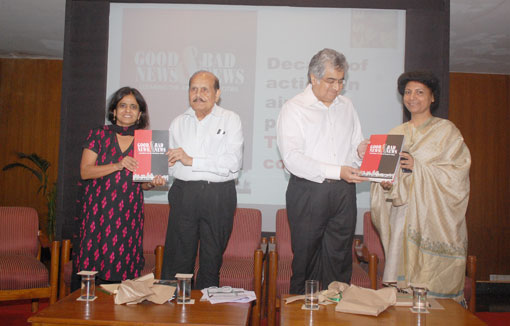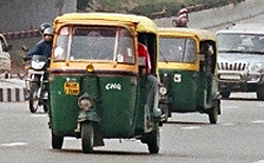De-risking lending for a brisk EV uptake
India’s electric mobility sector is witnessing swift expansion, surpassing 1.5 million units in sales in 2023, primarily driven by the electric two-wheelers segment. Despite achieving cost competitiveness
India’s electric mobility sector is witnessing swift expansion, surpassing 1.5 million units in sales in 2023, primarily driven by the electric two-wheelers segment. Despite achieving cost competitiveness
<p>Order of the National Green Tribunal (Western Zone Bench, Pune) in the matter of New Link Road Residents Forum & Others Vs. The Union of India & Others dated 13/10/2014 regarding pollution caused

<p>This is the press release on release of the book "Good News Bad News: Clearing the air in Indian cities" published by Centre for Science and Environment (CSE). This bird’s eye assessment of the cities of India & how they fare on parameters such as air quality, public transport, walkability, parking policies and fiscal initiatives was released in New Delhi by Harish Salve, senior advocate of Supreme Court of India and the Amicus Curiae on environmental cases.</p>
Cars use more space, crowd the road and move far fewer people. Our educated road planners must count people, not vehicles I write this stuck in traffic. Nothing unusual. But my location makes me realise, once again, how our highway route to progress is going nowhere. The road I am using is newly commissioned and expensive. It is the 28-km Delhi-Gurgaon Expressway, which was built just a few years ago to take care of the explosion of traffic between the two cities. It is access-controlled, with a 32-lane toll plaza, and was to provide easy access and a fun ride. The concessionaire – built as it is under the famous public-private partnership model – took all steps to keep it prized for cars. “Slow-moving” traffic like motorcycles, bicycles and even three-wheelers were banned on it.
Code specifies if car maker fails to recall, govt can intervene The Society of Indian Automobile Manufacturers (Siam) on Monday notified a ‘voluntary code on vehicle recall’ for passenger vehicle, two-wheeler and commercial vehicle manufacturers. It stipulates the conditions and procedures required to be followed on detection of any manufacturing flaws in products. However, unlike its counterparts in America, Europe or Japan, the guidelines do not include provisions for penalising auto makers in the event of non-adherence to the code.

<p><span id="itro1">This new working paper by ICCT identifies the most effective technologies for CO2, emissions and safety measures and maps the status of regulatory programs for 2- and 3-wheeler management

<p>In this new report Clean Air Initiative for Asian Cities analyzes the social and environmental impacts of motorized two and three-wheelers and provides an array of tailpipe and non-tailpipe measures to curb these.</p>
The European Commission has proposed new emissions standards for two and three-wheeled powered vehicles and quadricycles, collectively termed L-category vehicles, as part of a broader regulation that would also cover safety and market surveillance. From an air-quality perspective the primary objective is to keep constant or reduce the share of total road-transport emissions from L-category vehicl

Electric and hybrid vehicles are gaining a foothold because they are cheap and clean. But batteries are either expensive or short-lived. Their future rests with industry
Suggestions for controlling the menace by TSR drivers in the city from Delhi Traffic Police.

This report by ICCT reviews current trends in motorcycle emissions and fuel efficiency technology. Summarizes policy approaches to improve motorcycle emission and energy performance, and discusses what is required to implement these policies.